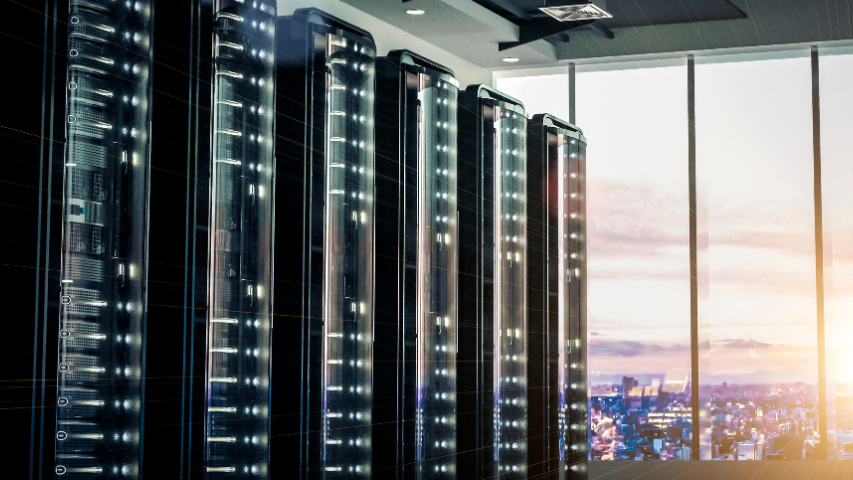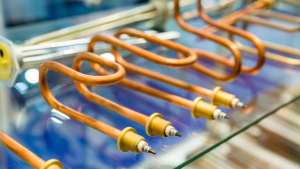HVAC for Data and Server Rooms
In the digital age, data and server rooms are the heartbeat of a business, powering essential operations and safeguarding critical information. Maintaining an optimal environment in these spaces is not just a matter of convenience; it’s a fundamental necessity. This is where heating, ventilation, and air conditioning (HVAC) systems come into play, ensuring reliable performance and longevity of the sensitive electronics housed within.
Understanding the Unique Needs of Data and Server Rooms
Data and server rooms are dynamic environments with high demands for precision in temperature and humidity control. The constant operation of servers generates significant amounts of heat, which if not properly managed, can reduce equipment reliability and lifespan, and in worst cases, lead to catastrophic data loss. Industrial engineers, HVAC technicians, and computer engineers face the challenge of designing HVAC systems that can keep these spaces cool and functioning optimally around the clock.
The Impact of Temperature and Humidity
The American Society of Heating, Refrigerating and Air-Conditioning Engineers (ASHRAE) provides guidelines for the acceptable operating conditions in server rooms. Variations in temperature and humidity beyond the recommended levels can lead to static electricity buildup, corrosion, and physical damage to components. Achieving the balance of cool and dry—without crossing into excessive cooling or over-dehumidification—is a delicate dance that requires expertise and precision.
Their recommendations highlight the fine balance required in server environments, specifying a temperature range of 18°C to 27°C (64°F to 81°F) to prevent overheating, while also avoiding too cool conditions which can lead to condensation. In terms of humidity, ASHRAE advises maintaining levels between 20% to 80% relative humidity (RH), with a dew point range of 5°C to 15°C, to mitigate the risks of static electricity build-up, corrosion, and other moisture-related issues. Adhering to these guidelines can lead to efficient server operation, reduced downtime, and extended hardware life, ultimately saving organizations from costly repairs or replacements and data loss.

Key HVAC Considerations in Data Centre and Server Room Design
Designing an HVAC system for a data center or server room goes beyond simple cooling. Here are the essential factors to consider:
Redundancy and Reliability
Systems must be designed with redundancy to ensure continuous operation even during maintenance or component failure. This often involves installing multiple cooling units that can independently maintain the environment in case one unit fails or requires servicing.
Scalability and Flexibility
The HVAC design should account for potential growth or reconfiguration of the data center. Modular systems that allow easy expansion can be highly beneficial in adapting to future needs without significant overhauls.
Energy Efficiency
Cooling can be one of the largest operating expenses in data centers. Systems that offer superior energy efficiency, such as those employing variable speed drives and economizers, can provide significant cost savings and contribute to sustainability goals.
Precision Cooling
Unlike traditional HVAC systems that often aim for general comfort, precision cooling units target the specific needs of server equipment, with focused temperature and humidity controls that operate within the narrow parameters required for electronic equipment.
Monitoring and Management
Advanced HVAC systems in server rooms often integrate with building automation systems (BAS) for real-time monitoring and alerting of any environmental fluctuations. Remote monitoring capabilities allow for immediate actions to be taken, even during off hours.
Best Practices for Data and Server Room HVAC Maintenance
Regular maintenance is critical to the performance of HVAC systems servicing data and server rooms. Some best practices include:
- Regular Cleaning: Dust and debris can obstruct airflow and insulate components, leading to overheating. Schedule regular cleaning of all components to maintain optimal performance.
- Airflow Management: Organize cabling and equipment to prevent obstructions that can disrupt proper airflow patterns.
- Routine Inspections: Perform scheduled inspections of the HVAC system to check for wear and tear, replacing parts before they fail.
- Calibration of Sensors: Ensure humidity and temperature sensors are calibrated correctly for accurate readings.
- Documentation and Training: Maintain clear documentation of the HVAC system, and ensure that all personnel are trained on emergency procedures and system operation.

Whether you are an industrial engineer working to spec out a new build, an HVAC technician tasked with preserving the delicate balance of a data center environment, or a computer engineer looking to understand the intricacies of environmental controls essential to your hardware, HVAC for data and server rooms remains a pivotal, albeit often overlooked, aspect of technology-centric spaces.
Adopting a proactive approach to HVAC design and maintenance not only protects valuable equipment but also supports business continuity and enhances the resilience of our digital infrastructure. After all, the integrity of a server room is only as stable as the environmental control systems that surround it.
Remember, in the realm of data and server rooms, HVAC is not just another acronym—it’s the silent sentry standing watch over our invaluable digital archives.
Contact Level One Building Controls Division today to find out about our customizable solutions. Or drop us a line and let us know how we’re doing!
New Hudson, MI #248.486.6500
West Branch, MI #989-999-4822













